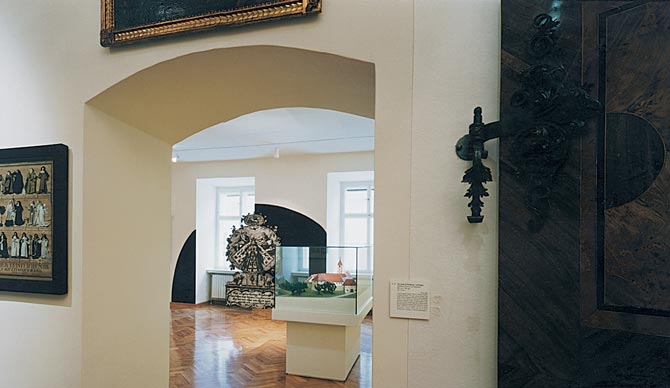Permanent Display 22. The Poor Clares of Zagreb
 In 1212, St. Clare of Assisi founded the order of Franciscan nuns - the Poor Clares.
In 1212, St. Clare of Assisi founded the order of Franciscan nuns - the Poor Clares.
In 1646 a number of them came to Zagreb from Bratislava and founded their convent on Gradec. The town council gave them the piece of land adjoining Popov Tower, where a large building that followed the line of the medieval defense walls was erected. On the west side it formed a new street, which was later named Opatička vulica (Nuns’ Street). With generous support by the Croatian nobility, notably Count Gašpar Drašković, they moved into the new convent in June 1650. Most of the nuns came from Croatian aristocratic families, the Zrinskis, Drašković, Patačić, Keglević, Oršić and others, who brought with them a dowry, mostly money, so that the convent soon acquired numerous estates and cash. The nuns even engaged in money lending, which became their main source of revenue.
The strict rules of their order forbade the nuns to go out of the convent; their life was austere and dedicated to contemplation.
The nuns ran a private girls’ school, in which they taught, among other subjects, singing and music. They promoted the Croatian language, using it in almost all of their documents and letters.
The rich spiritual life of the convent came to an end on 28th February 1782, when Emperor Joseph II decreed the cessation of the order of the Poor Clares.

Nada Premerl

